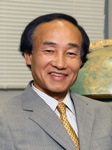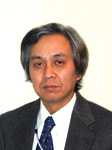Journalists Symposium 2010
Mutual Understanding and Progress of Intraregional Cooperation
in the Asia-Pacific Region and Journalism
-- Achievements in the 20 Years of APEC, and Future --
(Summary)
March 17, 2010
On March 3, 2010, the Ministry of Foreign Affairs held the Journalists Symposium 2010, on the theme of "Mutual Understanding and Progress of Intraregional Cooperation in the Asia-Pacific Region and Journalism: Achievements in the 20 Years of APEC, and Future," on the 10th floor hall of the Nippon Press Center Building. Lively discussions took place in the three sessions of the symposium on "The Media's View of 20 Years of Asia-Pacific Regional Cooperation," "The Present State of Asia-Pacific Regional Cooperation and Issues," and "The Media's Vision of the Future of the Asia-Pacific Region." The following is a summary of the symposium.
1. Overview
(1) Date and Time:
March 3 (Wednesday), 2010; 13:00-17:40
(2) Venue:
Nippon Press Center Hall, 10th Floor, Nippon Press Center Building
(3) Format:
Open symposium (audience of about 120)
(4) Theme:
"Mutual Understanding and Progress of Intraregional Cooperation in the Asia-Pacific Region and Journalism"
(5) Keynote speech:
Mr. Koichi Takemasa, State Secretary for Foreign Affairs (delivered by Press Secretary of MOFA)
(6) Chair and panelists (6 persons):
- Chair: Mr. Toshiyuki Sato, Special Controller, General Broadcasting Administration, Japan Broadcasting Corporation (NHK)
- Panelist from the Japanese media: Mr. Hiroshi Fuse, Deputy Chief Editorial Writer, The Mainichi Newspapers
- Panelist from the Singaporean media: Ms. Xueling Lin, Producer/Presenter, Channel NewsAsia, MediaCorp
- Panelist from the Australian media: Mr. Greg Sheridan, Foreign Editor, The Australian
- Panelist from the Japanese media: Mr. Takabumi Suzuoki, Senior Staff Writer, Nikkei Inc.
- Panelist from the Chinese media: Mr. Yong Zhang, Managing Editor, The Global Times
2. Summary of Symposium
(1) Keynote speech by Mr. Koichi Takemasa, State Secretary for Foreign Affairs (delivered by Press Secretary of MOFA)

Mr. Takemasa began his keynote speech by noting that this year Japan is hosting the APEC Economic Leaders' Meeting again for the first time in 15 years. APEC marked its twentieth anniversary last year, so this is the year in which it kicks off its next twenty years. He added that 2010 is also a milestone year as it is the deadline for APEC's industrialized economies to achieve what are known as the "Bogor Goals".
Mr. Takemasa then introduced the theme of this year's APEC, "Change and Action." He explained that Japan believes that APEC should envision necessary changes and shift those changes into concrete actions so that APEC can continue to have a meaningful presence into the future even as the situation surrounding the international community and the economies of the Asia-Pacific region is undergoing a dramatic transfiguration. Specifically, he noted that it is essential that assessment of the degree of achievement of the Bogor Goals attained by developed countries and regions is undertaken appropriately, and indicated the future direction in which APEC should proceed based on the three pillars of regional economic integration, new growth strategies, and human security.
Regarding regional cooperation in the Asia-Pacific region, Mr. Takemasa went on to note that movements toward regional integration in the Asia-Pacific region became more concrete from the late 1980s. In particular, such regional frameworks as APEC and ASEAN+3 were born. He then described the advance of varied cooperation in the region. Mr. Takemasa then noted that, grounded in the foundation of these efforts, there have been calls advocating concepts that aim for deepened regional integration. As an example, he mentioned the concept of an "East Asian Community" put forward by Japanese Prime Minister Yukio Hatoyama.
In November of last year, Mr. Takemasa continued, the APEC Economic Leaders' Meeting and Ministerial Meeting directed that a range of possible pathways to achieve the Free Trade Area of the Asia-Pacific (FTAAP) be explored within 2010. An important issue this year that Japan, as the chair of APEC, wants to engage in is sketching out such a vision for regional economic integration and advancing concrete efforts under it. What is important here, he stressed, is building up a collection of individual concrete efforts and areas of cooperation. Concrete efforts will lead to the fostering of a sense of unity and community awareness in the region, he said.
Mr. Takemasa then noted that journalists play an important role in establishing a sense of "presence" of the Asia-Pacific region and forming an awareness of a "community" among people living in the region. Mr. Takemasa expressed his hope for lively discussions at this symposium on such topics as what impact the vitalization of information communications has on the formation of a community consciousness, the feasibility of the concepts of the East Asian Community and the Free Trade Area of the Asia-Pacific, and what role the media can play in this process.
(2) Session 1 : "The Media's View of 20 Years of Asia-Pacific Regional Cooperation"

At the beginning, Mr. Sato (chair) explained that the symposium would discuss regional solidarity and cooperation in the Asia-Pacific region bearing in mind the special characteristics of the region, and that Session 1 would focus especially on the historical perspective. The following is a summary of the opening statement by Ms. Xueling Lin and the statements of the other panelists that followed.
(a) Ms. Xueling Lin (opening statement)

Over the last 20 years APEC has changed into a larger event that gets more attention from the media and is easy for ordinary people to participate in. To take last year's meeting in Singapore as an example, the Economic Leaders' Meeting took place in November, but if you include all the other related meetings, the event lasted for several months. Volunteers and other ordinary people actively took part, and 1,800 media representatives were registered.
Singapore had hosted an APEC meeting 20 years ago, but at that time it was only a ministerial meeting, and there were just 300 delegates. Mr. Sheridan of The Australian, who is a panelist here today, reported the event, but APEC did not attract as much attention as it does now.
When you look at coverage of APEC, there are some key events that must not be forgotten. At the meeting in Seattle in 1993, US President Bill Clinton changed it from a ministerial-level to a summit-level meeting, which escalated the media coverage tremendously. At the same time, toward the end of the 1990s, protest action also occurred at APEC meetings, as a result of which security became extremely tight.
As the media and ordinary people became more interested, so the themes of APEC meetings changed as well. When APEC started, all the talk was about the World Trade Organization and the Uruguay Round, so APEC focused on such issues as trade liberalization, investment, and information technology. Discussions were largely driven by the developed countries, so in the end there really was a North-South divide.
In recent years, however, as symbolized at last year's meeting in Singapore, a new trend has appeared. As a result of the financial crisis, the new theme that is emerging in APEC coverage is the "Asian millennium." In other words, there is a shift to the idea of cooperation and joint tactics.
In media coverage, we are required to have the perspective of how meetings like APEC have an effect on ordinary people. Globalization might be the buzzword, but what is more necessary for ordinary readers and ordinary viewers is the local perspective and what we call the Asian perspective; in other words, an interpretation that is uniquely Asian.
(b) Mr. Yong Zhang

I think awareness of the Asia-Pacific is growing rapidly in China. Since China began to participate in 1991, China's leaders have attended APEC meetings every time, and the Chinese government shows interest in the discussions there. This is because the Chinese economy depends on overseas markets, and the APEC agenda of trade and investment liberalization is related to the lives of ordinary Chinese. In view of the global financial crisis and the emergence of China itself, ordinary Chinese also are showing more interest in international affairs and the world. However, many Chinese do not have a correct understanding of countries included in the Asia-Pacific region and APEC. Regarding Japan as well, some people tend to think that Japan does not belong to Asia because it has a closer relationship to the Western world than Asian countries. But Japan's proposal to establish the East Asian community has helped to ease this kind of concern.
(c) Mr. Greg Sheridan

Regional cooperation has been very successful in the Asia-Pacific. The economy was growing fastest in this region, and militarily it was peaceful. However, there is an irony or paradox concealed in this success. It can be said that regional cooperation was successful because actually there was no content.
Also, the 1990s saw a great battle between two fundamental concepts of regionalism. One was the concept associated with Dr. Mahathir Mohamad, then prime minister of Malaysia, which was for an East Asian caucus minus the Caucasians, and the other was the concept of Asia-Pacific regionalism including Caucasian states. In the end, however, both sides were realized in the form of ASEAN+3, APEC, and so on. The Asia-Pacific region has developed over the last 20 years with both of these concepts coexisting.
(d) Mr. Hiroshi Fuse

Different ethnicities, thinking, and values are intermingled in the 21 countries and territories belonging to APEC. On this point, it is more unique than the cooperative frameworks in other regions. What deserves special mention is the fact that the United States is included. As a result, as shown strikingly by the case of China and the United States, countries aim to achieve development together in a situation of cooperation and confrontation. In that sense, APEC is extremely significant.
(e) Mr. Takabumi Suzuoki

APEC has contributed to business by adjusting tariffs and export-import procedures. In any region, it is only bureaucrats who like to talk about regional communities. In the private sector, that is rather considered taboo, because the formation of groups excludes countries that are not included in them. Ordinary people do not have so much awareness.
Following the opening statement and other statements, Mr. Sato (chair) asked how the media in each country report about Asia and the Asia-Pacific region and whether there are any organizational moves to report more about this region. The replies of the panelists were as follows:
(a) Mr. Sheridan
The Australian has been committed to coverage of the Asia-Pacific region from the beginning. Several years ago we increased the number of bureaus in Asia and reduced the number in Europe. Institutionally, the start of the APEC Economic Leaders' Meeting was most important, because it turned the attention of the media onto the region at least once a year. Backing regional cooperation is not itself the role of the media, but it does provide support in the sense of paying attention. Generally speaking, the media in Australia are positive about regional cooperation.
(b) Mr. Zhang
Regarding APEC, there are many things that the Chinese media should write about in the economic context, such as trade friction and protectionism.
(c) Mr. Fuse
The Mainichi Shimbun has always placed relatively more importance on coverage of Asia. Once we even made an Asia page in order to ensure space for news about Asia, which tends to be superseded by news about developments in the United States and terrorism.
(d) Mr. Suzuoki
At The Nikkei as well, 23 years ago we set up an Asia Department independent of the International Department and began to make a weekly Asia page. Our original aim was to protect Asian news from being swamped by news relating to Europe and the United States. Nowadays Asian news is not inferior to Western news, but we are continuing the Asia page for business reasons.
(3) Session 2 : "The Present State of Asia-Pacific Regional Cooperation and Issues"
Mr. Sato (chair) said that he now wanted to shift the focus from the past to the present. The following is a summary of the opening statement on this topic by Mr. Zhang and the statements of the other panelists that followed.
(a)Mr. Zhang (opening statement)
When China joined APEC in 1991, it was a difficult time for the country in international relations following the Tiananmen incident. In those circumstances, China used APEC as a forum for multilateral diplomacy. China strongly supports APEC. In addition, China cleverly uses APEC as a place to build relations with the other participating countries and as a place to project its regional and international influence. However, APEC also has its limits, and I think there is little possibility of its expansion in areas other than the economic field. In particular, China is cautious about APEC's influence extending to political sovereignty.
Regarding the media, the Chinese media are all state-run, but their contents are diverse. The Global Times has gained popularity for its critical coverage of sensitive issues, and the Internet is an increasingly important medium for information as well. The Chinese government has begun to pay attention to public opinion in the drafting of foreign policy, and the people are becoming increasingly interested in the national interest. In recent coverage relating to relations with Australia and the United States, while the Western media have criticized the Chinese media for being patriotic, the Chinese media have claimed that they are being treated as the bad guys by the Western media. But I think the media should play a role in communicating the truth and promoting mutual understanding.
(b) Mr. Sheridan
The interesting thing is that the dispute between China and Australia has not led to a weakening of regional cooperation. Indeed, economic cooperation between the two countries is proceeding full speed ahead. Regarding the Chinese media, I hope that more diverse media than at present will develop.
(c) Ms. Lin
Singapore is also a multi-cultural country in a multi-cultural region, which requires sensitivity in reporting. Furthermore, as regional cooperation advances, and news becomes more global - an interesting situation can arise where there is more news about events taking place in other countries than about your own country.
(d) Mr. Fuse
Reporting the truth, it is easy to say, hard to do. What is important is to report without being constrained by any one value or your own values.
(e) Mr. Suzuoki
The media can be described as patriotic in all countries. The important thing is the degree. If a dispute breaks out, it is necessary for the media to report the opinions of the other side and maintain reliability.
When Mr. Sato (chair) raised issues relating to new media, such as the exposure of extreme nationalism seen on the Internet, the panelists made the following statements:
(a) Ms. Lin
At Channel NewsAsia, we try to gather and manage opinions on the Internet through the so-called I-Journalist program. For example, we hold shows inviting such people as "i-journalists" [self-proclaimed citizen journalists], ordinary reporters, and students. Regarding comments on the Internet that amount to racial discrimination or slander, there are regulations by the media themselves and by the government.
(b) Mr. Sheridan
The emergence of cyber-media is posing a big commercial challenge to the traditional media. The Australian also is considering charging for contents carried on the Internet. Also, compared with people like newspaper readers, some cyberspace users can be just too extreme and irrational.
(c) Mr. Zhang
I don't think there is so much need to worry about cyber-jingoism. According to a survey by the Chinese Academy of Sciences, 70 percent of the political-related incidents that occurred in 2009 were first disclosed on the Internet. In China in the past it was the government that first knew about an incident, and it was the government that then decided whether or not to disclose it. Censorship has also become more difficult than before following the emergence of the Internet, and it is seen by democratic activists as a major weapon.
(d) Mr. Suzuoki
On the Internet it is possible to read the newspapers of other countries through automatic translation, too. If the amount of information increases, the bad aspects of the other side come into view as well.
(4) Session 3 : "The Media's Vision of the Future of the Asia-Pacific Region"
Mr. Sato (chair) posed the questions of how regional cooperation and integration are advancing in APEC and the Asia-Pacific region and how national media are viewing these developments. The opening statement on this topic by Mr. Sheridan was as follows:
(a) Mr. Sheridan (opening statement)
Australia's involvement in Asia-Pacific regionalism goes back to the 1970s. Australia's three objectives in becoming involved in this region were (1) to build the regional institutions which can most effectively help the Asia Pacific achieve economic growth and political/military stability; (2) to promote a dynamic which weaves Australia into the region; and (3) to serve a variety of Australia's own strategic objectives. In addition, through these efforts, Australia was able to strengthen cooperative relations with important countries.
ASEAN has developed into something of a community. On the other hand, ties in Asia and Asia-Pacific are loose, but cooperative relations led by economic integration are stronger than they look. Really, there is no need for this reason to sacrifice its diversity and have a common identity. Cooperative relations are already strong, and there are mechanisms by which leaders can consult with one another.
Australian Prime Minister Kevin Rudd is proposing the formation of an Asia-Pacific community. The substance of this concept is flexible. Countries from the United States to India can participate, and the suggestion is that security matters will also be discussed. This concept might actually be realized if India joins APEC or the United States joins the East Asia Summit. There is also a possibility that such concepts will provide an opportunity to rationalize the vast array of organizations that exist in the region.
Mr. Sato (chair) then put various questions to each panelist. The exchanges were as follows:
Mr. Sato:
Is there any significance in ASEAN and APEC from the economic perspective?
Mr. Suzuoki
Tariffs are being reduced little by little, and even more importantly, there has been a large effect through export standards and accreditation. Generally speaking, though, national governments tend to overemphasize the effects of free trade agreements and the like, so caution is necessary on this point.
In addition, Indonesia is now calling for a revision of its FTA with China in order to protect its own textile industry. Foreign exchange is at the root of this problem. Since the renminbi is pegged to the US dollar, the Chinese textile industry is in a more advantageous position than that of Indonesia. As shown by this one example, if FTAs are advanced and a community is formed in Asia, the discussion will most probably move on to foreign exchange management and a single currency. Given this situation, the United States would probably be included in the community. At present the United States is the only country in the world that can demand that China revalue the renminbi.
Mr. Sato:
What do you think about the direction of Japan's emphasis on East Asia?
(a) Mr. Sheridan
I don't think it's very different from Australia's view. Australia would be perfectly happy to be part of an East Asia group that excludes the United States. But both functionally and historically, I cannot see any argument for keeping the United States at bay. If we are talking about an organization that does real business, I cannot see why anybody would want to exclude the diverse United States system, which remains the most powerful system in the world. And I think in the end Mr. Hatoyama's East Asian diplomacy will also include the United States in this design.
(b) Mr. Fuse
Looking at reality, Prime Minister Hatoyama's "East Asian Community" concept is unique and I suppose intended to take the initiative in Asia. However, the approach between the United States and China already began way back in 1972, when US President Richard Nixon visited China, and it has become further striking in recent years. Like China, India will probably emerge in Asia, and a structure of domination by the United States, China, and India will likely take shape from now on. The issue for Japan will be how to be involved in this structure.
Mr. Sato:
Asia includes such powers as India and China. In that situation, what kind of diplomacy should be advanced? Is there any domestic debate on this issue?
Mr. Zhang
People often talk about the emergence of China, and it is thought that China wants to be a leader. But there is a debate within China as well about what role China should play in the world. China is not prepared to play a leading role. There is a strong pragmatism in Chinese diplomacy. The first priority is economic development, and foreign policy is a tool for that purpose. In APEC and ASEAN+3 China is working energetically for the prosperity and peace of Asia, but I think it will still require time, for China and for the international community, before China can play a leading role in the world.
What China is most worried about is the rise of protectionism against the background of the recent international financial crisis. There is talk of expanding domestic demand in China, but a sudden shift will be difficult. From now on also, China will probably continue to have an interest in economic cooperation in Asia.
Mr. Sato:
Do you think that the United States should participate in the East Asian community?
(a) Mr. Zhang
According to China's official view, it is unavoidable that the United States and China will compete from now on. But the economy is only one aspect of national power. I don't think China in the foreseeable future will surpass the United States, which is much more advanced in terms of military power, technology, and so on. There is still a lot that China has to learn from the United States. In that sense, I think the United States is a stabilizing factor in this region. We are not opposed to America's involvement in an intraregional community. We take an extremely realistic approach to this problem.
(b) Mr. Suzuoki
I think the point is whether or not America and China will enter the same institution. As symbolized by COP 15, at present we have a structure of China versus the world. However, blaming China alone will not resolve the issue. In the economic field, Japan and China have many common interests. Japan and China share the feeling that the whole world would be troubled if the US dollar, the key currency, collapsed, so we want the United States to exercise stringent fiscal discipline. In that sense, it is not a bad thing if Japan, the United States, and China are in the same group.
(5) Chair's Summary
Mr. Sato
Regarding regional cooperation in Asia and the Asia-Pacific region, Mr. Sato wrapped up the symposium by commenting, "In the end the consensus we reached was probably that 'we cannot live alone in this world.' So some kind of cooperative regime is necessary. We do not know whether it is going to be full integration, but as long as we live in this region, we should not cause any confusion, and we should enjoy economic prosperity respecting human rights. Each and every one of us has to reap the benefit of the economic growth. That is the region we want to create. In terms of directionality, I think we are of the same opinion."
Back to Index
